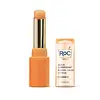What's inside
What's inside
 Key Ingredients
Key Ingredients

 Benefits
Benefits

 Concerns
Concerns

 Ingredients Side-by-side
Ingredients Side-by-side

C13-15 Alkane
SolventWater
Skin ConditioningCocoglycerides
EmollientHelianthus Annuus Seed Wax
Skin ConditioningButylene Glycol
HumectantAcrylates Crosspolymer
AbsorbentPolyhydroxystearic Acid
EmulsifyingTetrahexyldecyl Ascorbate
AntioxidantBis-Behenyl/Isostearyl/Phytosteryl Dimer Dilinoleyl Dimer Dilinoleate
EmollientPolyglyceryl-4 Oleate
EmulsifyingCetearyl Olivate
Polyglyceryl-6 Oleate
EmulsifyingHelianthus Annuus Seed Oil Unsaponifiables
EmollientTroxerutin
Skin ConditioningCalcium Aluminum Borosilicate
Diisostearyl Malate
EmollientGluconolactone
Skin ConditioningSorbitan Olivate
EmulsifyingTocopheryl Acetate
AntioxidantSodium Benzoate
MaskingSodium PCA
HumectantMaltodextrin
AbsorbentCistus Incanus Flower/Leaf/Stem Extract
Skin ConditioningHaematococcus Pluvialis Extract
AntioxidantOctyldodecanol
EmollientCalcium Gluconate
HumectantMalic Acid
BufferingPentaerythrityl Tetraisostearate
EmollientTocopherol
AntioxidantAstaxanthin
Skin ConditioningCaprylic/Capric Triglyceride
MaskingPropylene Carbonate
SolventStearalkonium Hectorite
Gel FormingPalmitoyl Hexapeptide-12
Skin ConditioningCI 77491
Cosmetic ColorantC13-15 Alkane, Water, Cocoglycerides, Helianthus Annuus Seed Wax, Butylene Glycol, Acrylates Crosspolymer, Polyhydroxystearic Acid, Tetrahexyldecyl Ascorbate, Bis-Behenyl/Isostearyl/Phytosteryl Dimer Dilinoleyl Dimer Dilinoleate, Polyglyceryl-4 Oleate, Cetearyl Olivate, Polyglyceryl-6 Oleate, Helianthus Annuus Seed Oil Unsaponifiables, Troxerutin, Calcium Aluminum Borosilicate, Diisostearyl Malate, Gluconolactone, Sorbitan Olivate, Tocopheryl Acetate, Sodium Benzoate, Sodium PCA, Maltodextrin, Cistus Incanus Flower/Leaf/Stem Extract, Haematococcus Pluvialis Extract, Octyldodecanol, Calcium Gluconate, Malic Acid, Pentaerythrityl Tetraisostearate, Tocopherol, Astaxanthin, Caprylic/Capric Triglyceride, Propylene Carbonate, Stearalkonium Hectorite, Palmitoyl Hexapeptide-12, CI 77491
Water
Skin ConditioningDimethicone
EmollientGlycerin
HumectantIsononyl Isononanoate
EmollientButylene Glycol
HumectantHdi/Trimethylol Hexyllactone Crosspolymer
Dimethicone Crosspolymer
Emulsion StabilisingCetearyl Alcohol
EmollientAmmonium Acryloyldimethyltaurate/Vp Copolymer
Caffeine
Skin ConditioningPhenoxyethanol
PreservativeMica
Cosmetic ColorantPolysorbate 20
EmulsifyingPanthenol
Skin ConditioningXanthan Gum
EmulsifyingDimethiconol
EmollientSaccharomyces Cerevisiae Extract
Skin ConditioningTocopheryl Acetate
AntioxidantMethylparaben
PreservativeSteareth-20
CleansingEthylparaben
PreservativeSilica
AbrasiveAscorbyl Glucoside
AntioxidantTetrasodium EDTA
T-Butyl Alcohol
PerfumingEthylhexylglycerin
Skin ConditioningCitric Acid
BufferingChlorhexidine Digluconate
AntimicrobialN-Hydroxysuccinimide
Skin ConditioningPotassium Sorbate
PreservativeSodium Citrate
BufferingPalmitoyl Tripeptide-1
Skin ConditioningChrysin
Skin ConditioningPalmitoyl Tetrapeptide-7
Skin ConditioningBiotin
AntiseborrhoeicCI 77891
Cosmetic ColorantCI 77492
Cosmetic ColorantCI 77491
Cosmetic ColorantCI 77499
Cosmetic ColorantWater, Dimethicone, Glycerin, Isononyl Isononanoate, Butylene Glycol, Hdi/Trimethylol Hexyllactone Crosspolymer, Dimethicone Crosspolymer, Cetearyl Alcohol, Ammonium Acryloyldimethyltaurate/Vp Copolymer, Caffeine, Phenoxyethanol, Mica, Polysorbate 20, Panthenol, Xanthan Gum, Dimethiconol, Saccharomyces Cerevisiae Extract, Tocopheryl Acetate, Methylparaben, Steareth-20, Ethylparaben, Silica, Ascorbyl Glucoside, Tetrasodium EDTA, T-Butyl Alcohol, Ethylhexylglycerin, Citric Acid, Chlorhexidine Digluconate, N-Hydroxysuccinimide, Potassium Sorbate, Sodium Citrate, Palmitoyl Tripeptide-1, Chrysin, Palmitoyl Tetrapeptide-7, Biotin, CI 77891, CI 77492, CI 77491, CI 77499
 Reviews
Reviews

Alternatives
Ingredients Explained
These ingredients are found in both products.
Ingredients higher up in an ingredient list are typically present in a larger amount.
Butylene Glycol (or BG) is used within cosmetic products for a few different reasons:
Overall, Butylene Glycol is a safe and well-rounded ingredient that works well with other ingredients.
Though this ingredient works well with most skin types, some people with sensitive skin may experience a reaction such as allergic rashes, closed comedones, or itchiness.
Learn more about Butylene GlycolCi 77491 is also hydrated iron III oxide. It's sole purpose is to give a red/pink hue to products.
Iron III oxides are classified as inorganic chemicals for coloring.
Synthetically created Ci 77491 is considered safer than those naturally found. This is because the synthetically created version may contain less impurities. Iron oxides are generally non-toxic and non-allergenic.
Learn more about CI 77491Tocopheryl Acetate is AKA Vitamin E. It is an antioxidant and protects your skin from free radicals. Free radicals damage the skin by breaking down collagen.
One study found using Tocopheryl Acetate with Vitamin C decreased the number of sunburned cells.
Tocopheryl Acetate is commonly found in both skincare and dietary supplements.
Learn more about Tocopheryl AcetateWater. It's the most common cosmetic ingredient of all. You'll usually see it at the top of ingredient lists, meaning that it makes up the largest part of the product.
So why is it so popular? Water most often acts as a solvent - this means that it helps dissolve other ingredients into the formulation.
You'll also recognize water as that liquid we all need to stay alive. If you see this, drink a glass of water. Stay hydrated!
Learn more about Water